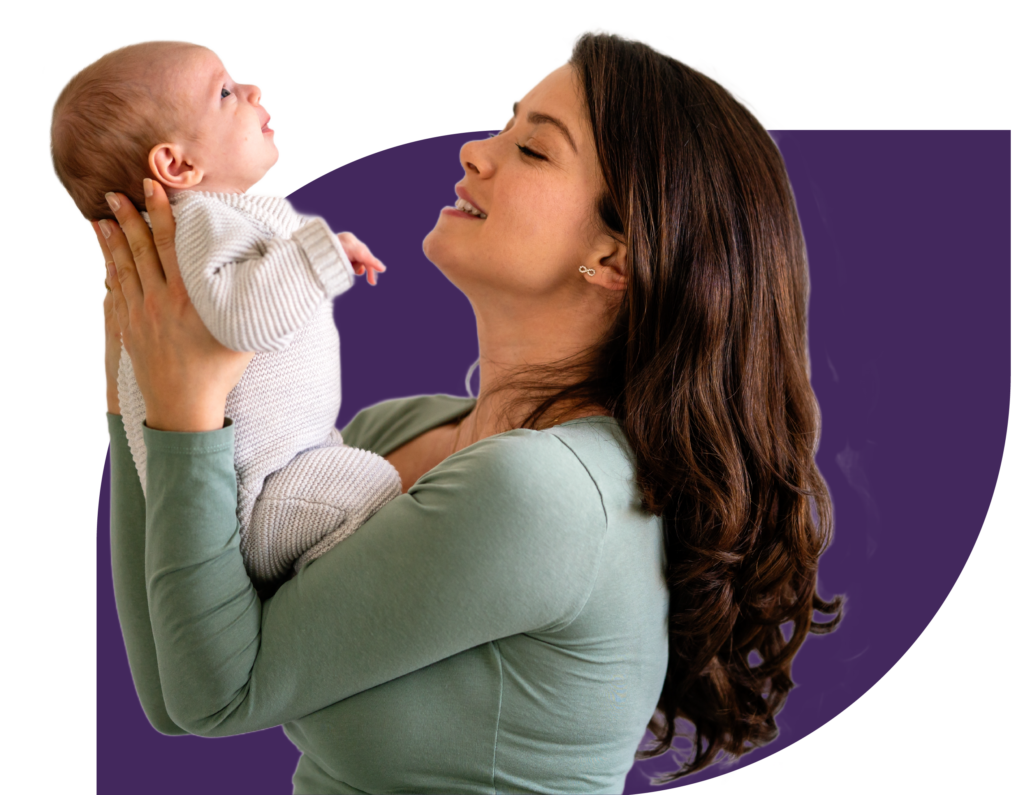
Early Childhood Advisory Council
The ECAC, established within the New York State Council on Children and Families (Social Services Law § 483-g), is comprised of New York State experts in early care and education, health care, child welfare, mental health, business, and community engagement. Membership is set forth in the authorizing law and represents state agencies, community-based non-profit organizations, foundations, higher education, unions, and other key entities across the state.
ECAC Equity Statement
The ECAC holds a deep commitment to social justice and racial equity, as a process and a goal, as evidenced by our work across the state. We recognize that, in order to uphold our vision and mission to support young children’s development, we must actively, critically and continuously work to disrupt and dismantle systemic racism. It is our responsibility to address the inequities impacting the lives of children and families on individual, interpersonal, institutional and structural levels. In doing so, we interrupt and address disproportionate outcomes and build systems that provide all children equitable access to the services, resources and experiences that they deserve in order to thrive.
ECAC VISION
The ECAC’s vision is that every child in New York State will be healthy, learning and thriving in a family that is supported by a full complement of services and resources essential for successful development.
ECAC MISSION
The ECAC will provide strategic direction to the Governor and State of New York on early childhood issues. By recommending a range of strategies, the ECAC supports New York in creating a comprehensive and sustainable early childhood system that will ensure success for all young children.
STRATEGIC PLAN
The ECAC’s four-year Strategic Plan covers the period 1/1/2023 – 12/31/2027. It builds upon the successes and learnings of previous plans and responds to current factors impacting the early care and education system.
Levers For Change
The ECAC identifies six levers for change as critical for strengthening the early childhood system and providing an infrastructure to support the grounding of this work in social justice, removing barriers to access services, and facilitating equitable child outcomes.
- Family Engagement
- Data
- Quality Improvement and Assurance
- Workforce Development
- Finances
- Research and Evaluation
Essential
Elements
With the young child and family as the focus, these levers guide the work of the ECAC across four essential elements. These levers and elements are intertwined, and their alignment necessary to support families’ access to equitable, comprehensive, and culturally relevant services, to ensure healthy development.

Providers and Practitioners

Comprehensive Health, Community, and Education Services

Standards, Regulations and Statutes

Policy and Governance
NYS ECAC
Members
All members of the ECAC are appointed by the Governor of NYS and serve without compensation. The ECAC meets quarterly in Albany. Click below for a list of our members.
ECAC History
The ECAC was created through federal action. In 2007, the Improving Head Start for School Readiness Act required every Governor in the United States to create a State Advisory Council on Early Childhood Education. The American Recovery and Reinvestment Act of 2009 provided funding for the state entities, with the goal of these state advisory councils being to strengthen statewide coordination and collaboration among the wide range of early childhood programs and services, including child care, Head Start, Early Head Start, IDEA preschool, infant and family programs, and prekindergarten. To meet this federal requirement, New York State created the ECAC. Since its creation, the ECAC has been co-chaired and administratively supported by the Council on Children and Families.
In accordance with Social Services Law § 483-g, the ECAC shall submit a statewide strategic report. The ECAC also holds public hearings and provides an opportunity for public comment on its activities.
ECAC
Partners
The ECAC is comprised of experts in education, health care, child welfare, family support, and mental health. Members represent state agencies, advocacy groups, foundations, higher education, unions and other key organizations concerned with the wellbeing of young children and their families. We consider our ECAC members partners to ensure all young children are healthy, learning, and thriving in families that are supported by a full complement of services and resources essential for successful development.
ECAC Contact
Patricia Persell, ECAC
Co-Chair
Dona Anderson, ECAC Co-Chair
ECAC Meeting
Materials
2023-2024 Meetings
December 2023
September 2023
June 2023
Archived Meetings
December 2022
- ECAC December Membership Agenda
- Full Presentation
- ECAC Membership List
- 2020-2022 Strategic Plan
- 2020-2022 Strategic Plan Workbook with Progress
- 2023 Strategic Plan Revision Draft
- ECAC Members Affiliation Information
- 2023 Meeting Schedule & Location
- 2022 ECAC Policy Recommendations
- Child Care Assistance Program Information
- Infant Toddler Court Initiative Introduction
- Access to Services for New Americans with Intellectual and Developmental Disabilities: Building
- Capacity through the Ramirez June Initiative
December 2021 (part 1)
- ECAC Membership Meeting Agenda
- ECAC Presentation
- Hunt Institute Build Back Better Presentation
- ECAC Membership List
- ECAC Strategic Plan
- ECAC Co-Chairs Letter to Governor Hochul
- ECAC Strategic Plan Quarterly Goal Updates
- QUALITYstarsNY ECAC Brief
- Hunt Institute: Build Back Better Guide for Policymakers
- Family Guide to NYS Early Childhood Services (translated into 10 languages)
- Kindergarten Transition Opportunity Flyer
- Parent Advisory Council (PAC) Recruitment Flyer
January 2022 (part 2)
- ECAC Membership Meeting Agenda
- ECAC Presentation
- ECAC 2022 Membership Meeting Schedule
- ECAC Membership List
- ECAC Strategic Plan
- Newly Appointed Members and Nominee: Headshots and Bios
- All About QUALITYstarsNY
- All About Start with Stars
- QUALITYstarsNY Testimonials
- NY State of the State Booklet
- Brisport bill S.7595
- Ramos bill S.7615
- Build Back Better Jamboard Overview
Resources from the Chat
- Early Childhood Mental Health Social and Emotional Support & Services (compiled by CCF)
- NY Kids Count Multimedia Data Book 2020 (compiled by CCF)
- Child Maltreatment Incidence (CMI) Data Linkages (ACF)
- Early Childhood Mental Health Resources (CCF flyer with links)
- Child Care Resource and Referral Agencies (CCRR) (CCF flyer with resources)
- NYS Child Care, After School, and Home Visiting Programs Locator (Parent Portal)
December 2020
September 2021
- ECAC September Membership Meeting Agenda
- Full Presentation
- ECAC Strategic Plan
- ECAC Membership List
- New Nominee Headshot and Bio
- Crosswalk of the ECAC Strategic Plan and the Child Care Availability Task Force (CCATF)
- Top Line ECAC Strategic Plan Goal Progress for 2021
- Child Poverty NYS Bill 1160-C
- CCATF NYS Bill 7721-A
- 2021 Advance Child Tax Credit Flyer
- Community of Practice Summit Flyer
- Parent Leadership Conference Fall 2021 Flyer
- Chapter 328 of the Laws of 2021
- NYS Bill 6516-A 2021
September 2020
June 2022
June 2021
- ECAC June Membership Meeting Agenda
- Full Presentation
- ECAC Strategic Plan 7-A-2 Recommendation
- ECAC Strategic Plan
- ECAC Strategic Plan: Goals and Objectives
- ECAC Membership List
- New ECAC Nominees
- Child Care Availability Task Force (CCATF) Report
- American Rescue Plan Website
- American Rescue Plan Information
- ECAC Potential Research Questions
- ECAC Children's Book List
June 2020
March 2022
- ECAC March Membership Meeting Agenda
- Full Presentation
- ECAC Membership List
- Child Care Availability Task Force (CCATF) Legislation
- 2021 Trauma Informed Organizational Toolkit
- Family Engagement Best Practices for State Agencies
- Family First Plan
- Empire State Campaign for Child Care (ESCCC) Statement
- Ramirez June Initiative One Pager
Office for New Americans (ONA) Services One Pager:
March 2021
March 2020
December 2019
September 2019
- ECAC September 2019 Member Meeting Agenda
- DC:0-5 Diagnostic Classification of Mental Health and Development
- Early Childhood Mental Health Consultation
- Early Care & Learning Council’s Infant Toddler Mental Health Project
- DC:05 Diagnostic Classification of Mental Health and Development
- Required Elements of the ECAC Strategic Plan
- ECAC Strategic Plan Full Draft
- ECAC Strategic Plan Draft: Goals and Objectives Only
- Worksheet for Measuring Success
- ECAC Membership List 2019
June 2019
- ECAC June 2019 Member Meeting Agenda
- ECAC Strategic Plan
- ECAC Membership List June 2019
- NYSED OEL Video Links Handout
- Child Care Availability Task Force Core Principles of a High Quality Child Care System
- NYS B5 Planning Infographic
- NYS B5 Strategic Planning Guidance
- Strategic Planning Handout
- Strategic Planning Visual
- Strategic Planning Retreat Attendees
- QUALITYstarsNY Presentation
- Early Development Instrument Presentation
March 2019
- ECAC March 2019 Member Meeting Agenda
- ECAC Strategic Plan
- ECAC Membership List March 2019
- ECAC Parent Flyer
- NYS Executive Early Childhood Budget Highlights for State Fiscal year 2019-2020
- Child Care Availability Task Force
- NYS B5 Grant Overview
- NYS B5 Grant Gears
- The Business Case for Investing in High-Quality Child Care
